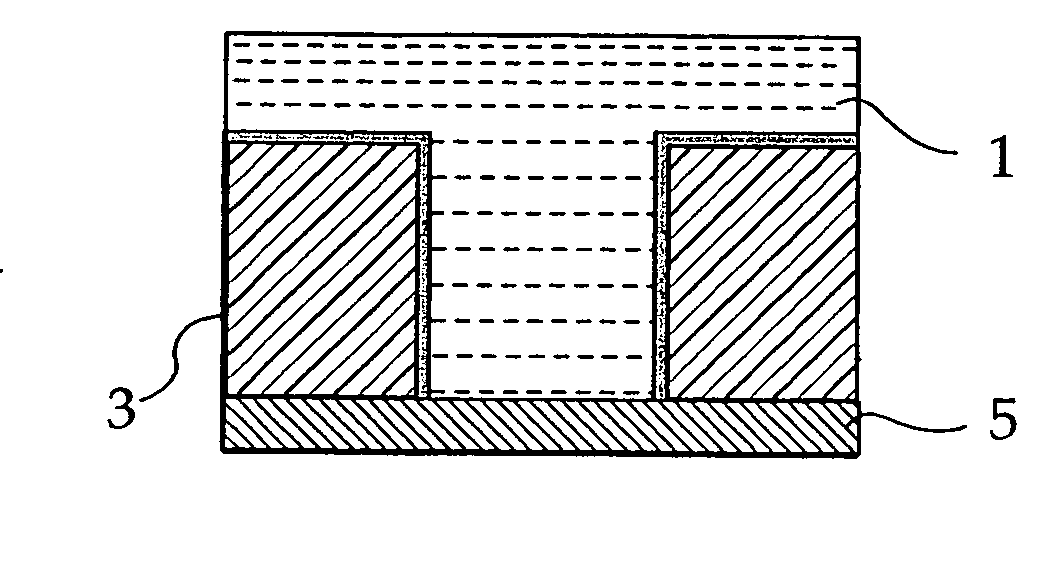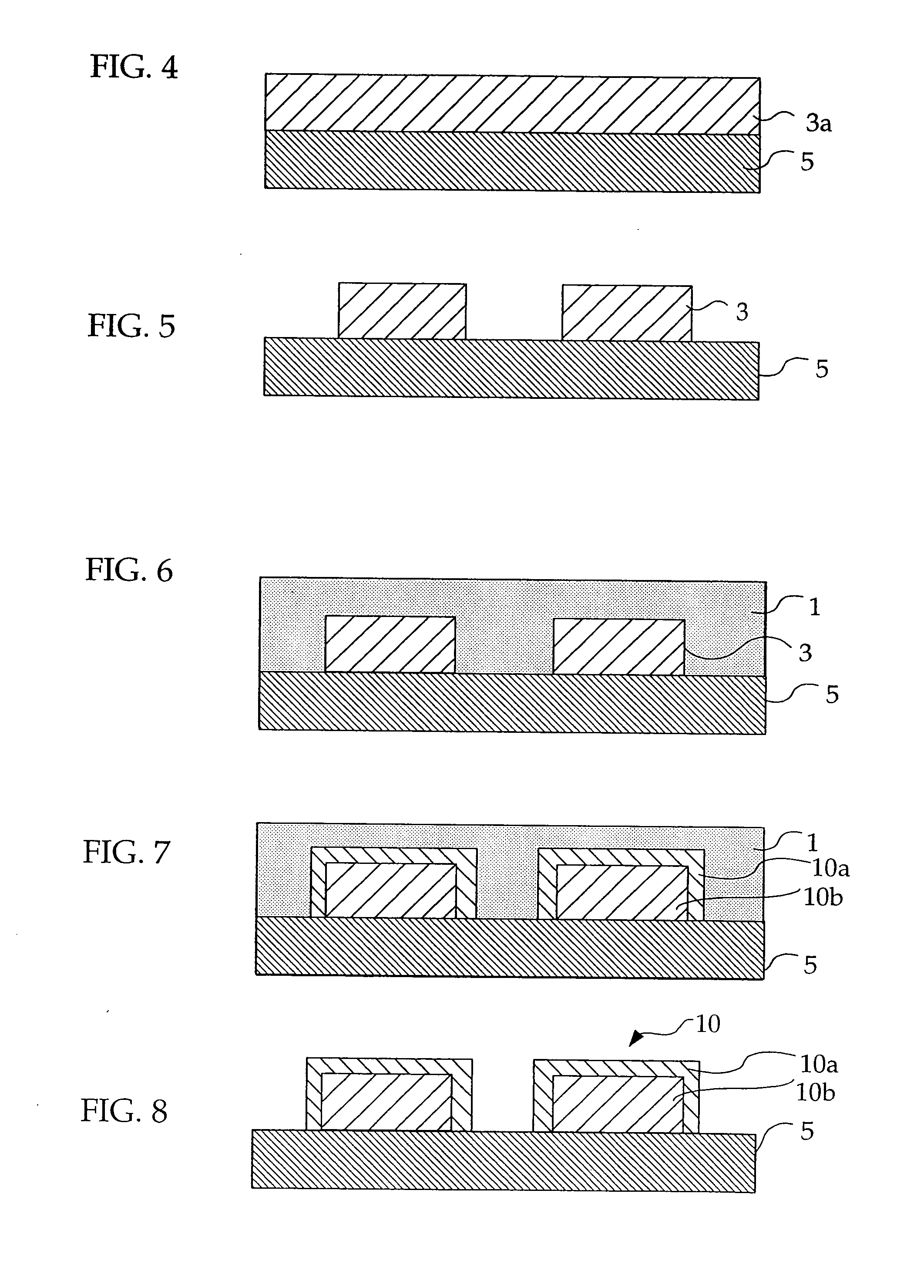Resist pattern thickening material and process for forming resist pattern, and semiconductor device and process for manufacturing the same
a technology of resist pattern and thickening material, which is applied in the direction of photosensitive materials, photosensitive materials auxiliaries/base layers, instruments, etc., can solve the problem of inability to thicken resist pattern without utilizing residual acid, and achieve uniform thickening effect, efficient thickening, and fine structure
- Summary
- Abstract
- Description
- Claims
- Application Information
AI Technical Summary
Benefits of technology
Problems solved by technology
Method used
Image
Examples
example 1
Preparation of Resist Pattern Thickening Material
[0223] Resist pattern thickening materials A through T having the compositions shown in Table 1 were prepared.
[0224] Note that, in Table 1, the “thickening material” means a resist pattern thickening material, and “A” through “T” correspond to the resist pattern thickening materials A through T. Of the resist pattern thickening materials A through T, the resist pattern thickening materials A, B, and P correspond to comparative example and the resist pattern thickening materials C to 0 and Q to T correspond to examples (of the present invention). Note that, in Table 1, the unit of the values in parentheses is parts by mass.
[0225] In the “compound represented by the general formula (1)” column of resist pattern thickening materials C to 0 and Q to T, benzyl alcohol, benzylamine, and a derivative thereof are compounds represented by the following general formula (1).
[0226] In the general formula (1), “X” is a functional group repre...
example 2
[0248] As shown in FIG. 9, an interlayer dielectric film 12 was formed on a silicon substrate 11, and as shown in FIG. 10, a titanium film 13 was formed by a sputtering method on the interlayer dielectric film 12. Next, as shown in FIG. 11, a resist pattern 14 was formed by a known photolithographic technique. By using the resist pattern 14 as a mask, the titanium film 13 was patterned by reactive ion etching to form openings 15a. Reactive ion etching was continuously carried out to remove the resist pattern 14, at the same time, as shown in FIG. 12, openings 15b were formed in the interlayer dielectric film 12 by using the titanium film 13 as a mask.
[0249] Next, the titanium film 13 was removed by wet processing, and as shown in FIG. 13, a TiN film 16 was formed on the interlayer dielectric film 12 by a sputtering method. Subsequently, a Cu film 17 was grown by an electrolytic plating method on the TiN film 16. Next, as shown in FIG. 14, planarizing was carried out by CMP such tha...
example 3
Flash Memory and Manufacture Thereof
[0253] Example 3 illustrates an embodiment of the semiconductor device and the manufacturing process thereof of the present invention using a resist pattern thickening material of the present invention. In Example 3, resist films 26, 27, 29 and 32 are ones thickened by the same method as in Examples 1 and 2 using the resist pattern thickening material of the present invention.
[0254]FIGS. 18 and 19 are top views (plan views) of a FLASH EPROM which is called a FLOTOX type or an ETOX type. FIGS. 20 through 28 are schematic sectional views showing a manufacturing process of the FLASH EPROM. In these figures, the left views are schematic sectional views (sectional views taken along lines A-A) of a memory cell unit (a first element region), in a gate width direction (in the X direction in FIGS. 18 and 19), in a portion where a MOS transistor having a floating gate electrode is to be formed. The central views are schematic sectional views (sectional v...
PUM
 Login to View More
Login to View More Abstract
Description
Claims
Application Information
 Login to View More
Login to View More - R&D
- Intellectual Property
- Life Sciences
- Materials
- Tech Scout
- Unparalleled Data Quality
- Higher Quality Content
- 60% Fewer Hallucinations
Browse by: Latest US Patents, China's latest patents, Technical Efficacy Thesaurus, Application Domain, Technology Topic, Popular Technical Reports.
© 2025 PatSnap. All rights reserved.Legal|Privacy policy|Modern Slavery Act Transparency Statement|Sitemap|About US| Contact US: help@patsnap.com



